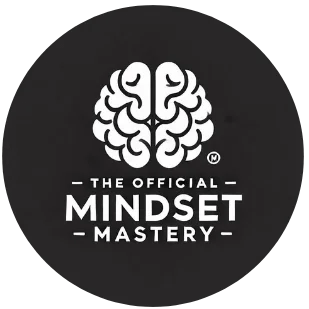Mindful breathing is a foundational practice for relaxation and mental clarity. It involves focusing your awareness on your breath, observing each inhale and exhale without trying to change or control it. By simply paying attention to the natural rhythm of your breath, you can create a sense of calm and presence. According to Harvard Medical School, mindful breathing helps activate the parasympathetic nervous system, which reduces the body’s stress response and promotes relaxation. Practicing mindful breathing daily can have a profound effect on your mental and physical well-being, making it a key exercise for stress relief and relaxation.
Basic Breath Awareness for Grounding
The simplest mindful breathing exercise is breath awareness. To practice, sit or lie down in a comfortable position, close your eyes, and begin by noticing your breath as it naturally flows in and out. Don’t try to change the rhythm or pace—just observe. If your mind starts to wander, gently bring your focus back to your breath. According to Mindful.org, breath awareness is a powerful grounding technique because it anchors your attention to the present moment. Practicing this for just a few minutes each day can help reduce anxiety and improve mental clarity.
The 4-7-8 Breathing Technique for Relaxation
The 4-7-8 breathing technique is a well-known mindful breathing exercise designed to promote relaxation. It involves inhaling for 4 seconds, holding the breath for 7 seconds, and exhaling for 8 seconds. According to Dr. Andrew Weil, who popularized the method, this technique helps slow the heart rate and increase oxygen flow to the brain, making it especially effective for reducing stress and anxiety. By lengthening the exhale, you encourage the body to enter a state of relaxation. Practicing the 4-7-8 technique before bed can also help improve sleep quality.
Box Breathing for Focus and Calm
Box breathing, also known as square breathing, is another effective mindful breathing exercise that promotes relaxation and focus. To practice, inhale for 4 counts, hold for 4 counts, exhale for 4 counts, and hold again for 4 counts, forming a “box” with your breath. According to the Cleveland Clinic, box breathing helps regulate the autonomic nervous system, which controls the body’s fight-or-flight response. By engaging in this practice, you can bring yourself into a state of calm and mental clarity, making it a useful tool for managing stress throughout the day.
Alternate Nostril Breathing for Balance
Alternate nostril breathing, or Nadi Shodhana, is a traditional yogic breathing practice that helps balance the mind and body. To practice, sit comfortably, close your right nostril with your thumb, and inhale deeply through your left nostril. Then close your left nostril with your ring finger, release your right nostril, and exhale fully through the right. Repeat by inhaling through the right nostril, closing it, and exhaling through the left. According to the International Journal of Yoga, alternate nostril breathing improves respiratory function, reduces stress, and promotes mental clarity. Practicing this technique regularly can help bring balance to your energy and emotions.
Deep Belly Breathing for Tension Release
Deep belly breathing, also known as diaphragmatic breathing, encourages you to breathe deeply from the diaphragm, allowing your belly to rise and fall with each breath. To practice, place one hand on your chest and the other on your belly. As you inhale, focus on expanding your belly rather than your chest. Exhale slowly, letting your belly contract. According to Harvard Health Publishing, deep belly breathing helps release tension in the body and promotes relaxation by activating the body’s relaxation response. This technique is especially effective for reducing physical stress and calming the nervous system.
Mindful Breathing with Counting for Mental Focus
Counting breaths is a simple way to add structure to your mindful breathing practice, which can help improve focus and concentration. Begin by inhaling and exhaling naturally, and silently count each breath. For example, count “one” on the inhale, “two” on the exhale, and so on until you reach ten, then start over. If your mind wanders, simply return to counting from one. According to the American Psychological Association, counting breaths helps train your mind to stay present and focused, making it a useful tool for managing stress and enhancing mental clarity.
Visualizing the Breath for Enhanced Relaxation
Adding visualization to your mindful breathing practice can further deepen relaxation. As you inhale, imagine breathing in calmness and positive energy. As you exhale, visualize releasing stress and negative thoughts. This technique combines mindfulness with visualization to create a powerful relaxation exercise. According to The Greater Good Science Center, visualization can enhance the effects of mindful breathing by engaging the mind in a positive and intentional way. Practicing this technique can help you feel more relaxed and centered, especially during times of heightened stress.
Lengthening the Exhale for Deep Calm
One of the simplest ways to enhance the calming effects of mindful breathing is to focus on lengthening your exhale. By making your exhale longer than your inhale, you signal the body to enter a state of relaxation. For example, if you inhale for 4 counts, try exhaling for 6 or 8 counts. According to Johns Hopkins Medicine, lengthening the exhale stimulates the vagus nerve, which helps slow the heart rate and calm the nervous system. This technique is especially useful when you’re feeling anxious or stressed, as it quickly promotes a sense of calm and ease.
Practicing Mindful Breathing Throughout the Day
Mindful breathing doesn’t have to be limited to formal meditation sessions. You can practice it throughout the day to manage stress, improve focus, and stay grounded. Whether you’re sitting at your desk, walking, or even waiting in line, take a few moments to focus on your breath. According to The Mayo Clinic, incorporating mindful breathing into your daily routine can help reduce chronic stress and improve overall well-being. By making mindful breathing a regular part of your life, you can create a lasting sense of calm and mental clarity.
References
- Harvard Medical School. (2020). The Relaxation Response and Mindful Breathing.
- Mindful.org. (2019). How Breath Awareness Can Reduce Anxiety and Improve Focus.
- Dr. Andrew Weil. (2018). The 4-7-8 Breathing Technique for Stress Relief.
- Cleveland Clinic. (2020). Box Breathing: A Simple Technique for Reducing Stress.
- International Journal of Yoga. (2017). The Benefits of Alternate Nostril Breathing.
- Harvard Health Publishing. (2019). Deep Belly Breathing for Relaxation and Stress Relief.
- American Psychological Association. (2020). Counting Breaths: A Simple Mindfulness Exercise.
- The Greater Good Science Center. (2018). Using Visualization to Enhance Mindful Breathing.
- Johns Hopkins Medicine. (2019). How Lengthening Your Exhale Can Calm the Nervous System.
- Mayo Clinic. (2020). The Role of Mindful Breathing in Stress Management.





